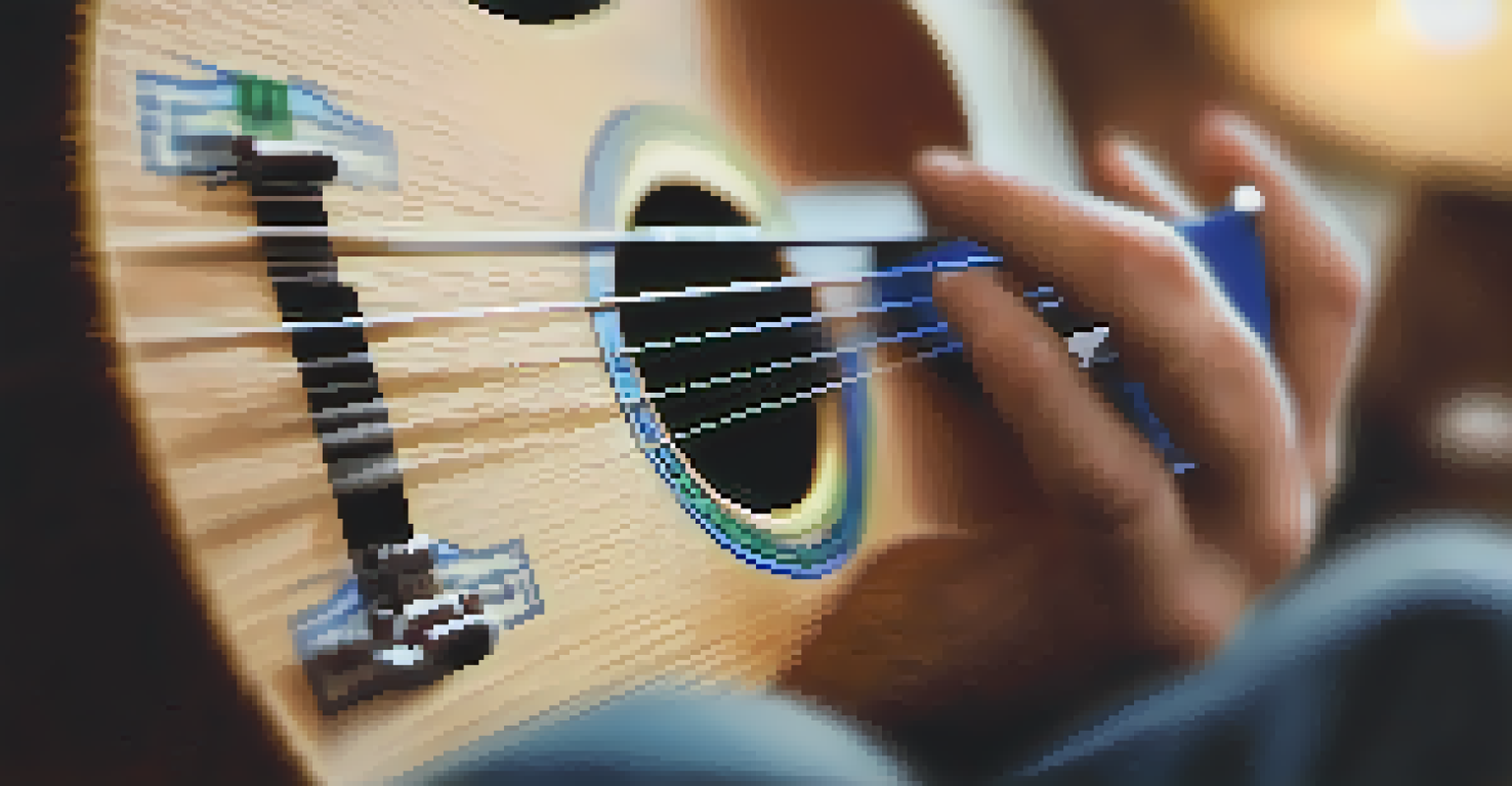How to Use a Tuner: Best Practices for Ukulele Players

Understanding the Importance of Tuning Your Ukulele
Tuning your ukulele is crucial for achieving that sweet, melodic sound that makes this instrument so beloved. If your ukulele is out of tune, even the best player will struggle to sound good. Imagine trying to sing along to your favorite song while your voice is slightly off-key; it just doesn’t feel right, does it?
The beautiful thing about learning is that no one can take it away from you.
A well-tuned ukulele not only enhances your playing experience but also helps you develop your ear for music. It makes it easier to play along with other musicians or recordings, ensuring that everyone is harmonizing beautifully. Think of tuning as the foundation of a house—without a solid base, everything else can crumble.
Ultimately, taking the time to tune your ukulele will greatly improve your confidence and enjoyment as you play. So, let’s dive into the best practices for using a tuner effectively!
Choosing the Right Tuner for Your Ukulele
When it comes to tuners, you have several options available, including clip-on tuners, pedal tuners, and smartphone apps. Each type has its pros and cons, so it’s essential to choose one that fits your playing style and environment. For instance, clip-on tuners are great for noisy settings since they pick up vibrations directly from the instrument.

Smartphone apps can be incredibly convenient, as they often come with additional features like chord libraries and metronomes. However, they may be less effective in distracting environments compared to dedicated tuners. Think about where you'll be using the tuner most often and choose accordingly.
Tuning Enhances Your Ukulele Experience
A well-tuned ukulele improves your playing and helps you harmonize with others.
Ultimately, the best tuner is the one you feel most comfortable using. A tuner that you can easily access and understand will make tuning a breeze, allowing you to focus more on your music rather than the mechanics of tuning.
How to Properly Use a Clip-On Tuner
Using a clip-on tuner is straightforward and user-friendly, making it a popular choice among ukulele players. First, attach the tuner to the headstock of your ukulele, ensuring it has a clear view of the strings. Once it's securely in place, turn it on and pluck the string you want to tune.
Music is the shorthand of emotion.
The tuner will indicate whether the pitch is too high or too low by displaying a needle or light that shows you the note. For example, if you’re tuning the G string and the tuner shows a sharp reading, you’ll need to loosen the tuning peg to bring it down in pitch. It's almost like having a helpful coach guiding you towards the right note!
As you adjust the tuning pegs, keep plucking the string periodically to check your progress. Once the tuner indicates that you’ve hit the correct note, move on to the next string. With practice, this process will feel second nature, and you’ll be able to tune up quickly before each practice session.
Tuning Your Ukulele by Ear: A Complementary Skill
While using a tuner is incredibly effective, developing the ability to tune your ukulele by ear can be a valuable skill, too. Start by tuning one string to a reference pitch, such as a tuning fork or a piano note. Once you have one string in tune, you can use it to tune the remaining strings by ear.
For instance, the A string can be used as a reference for tuning the E string by fretting the 4th fret on the A string, which gives you the same note as the open E string. This method not only sharpens your musical ear but also deepens your understanding of how the ukulele works.
Choose the Right Tuner for You
Selecting a tuner that fits your style can make tuning quick and easy.
With time and practice, you'll find that tuning by ear becomes easier, and you may even prefer it in certain situations. It adds an extra layer of connection to your instrument and helps you become a more well-rounded musician.
Common Tuning Issues and How to Fix Them
Even with the best intentions, tuning issues can arise. One common problem is that your strings may slip out of tune due to temperature changes or humidity levels. If you’ve just changed your strings, they might need extra attention as they stretch and settle into place.
Another issue could be that your tuner is not calibrated correctly, leading to inaccurate readings. Always check the settings on your tuner to ensure it’s set to standard tuning, which for ukuleles is G-C-E-A. If you’re in a different tuning, adjust accordingly to avoid confusion.
If you frequently find your ukulele slipping out of tune, consider investing in higher-quality strings or tuning pegs. Sometimes, the simplest solutions can make a significant impact on your tuning stability.
Maintaining Your Ukulele for Better Tuning Stability
A well-maintained ukulele will stay in tune longer and make your tuning experience more enjoyable. Regularly check for any signs of wear or damage on the strings, tuning pegs, and body of the instrument. Keeping your ukulele clean and free of debris will help maintain its integrity and sound quality.
Consider investing in a humidity control system if you live in an area with fluctuating weather. Keeping your ukulele at the right humidity level can prevent wood warping and other issues that may affect tuning stability. Think of it as giving your instrument a comfortable home!
Regular Tuning is Essential for Growth
Incorporating tuning into your practice routine helps develop your musical ear and skills.
Routine maintenance not only prolongs the life of your ukulele but also enhances your playing experience. A happy ukulele means you’ll spend less time tuning and more time enjoying music!
The Importance of Regular Tuning in Your Practice Routine
Incorporating regular tuning into your practice routine is essential for developing your skills as a ukulele player. Before each session, take a few moments to tune your instrument, ensuring that you’re starting off on the right note. This small step can make a big difference in your overall progress and enjoyment.
Tuning before practice also helps you to develop a better ear for pitch and tone. As you become more familiar with how a properly tuned ukulele sounds, you’ll find it easier to identify when something is off. This awareness will enhance your musical abilities over time.

So, make tuning a non-negotiable part of your practice. Like warming up before a workout, it prepares you for a productive session and helps you get the most out of your playing.